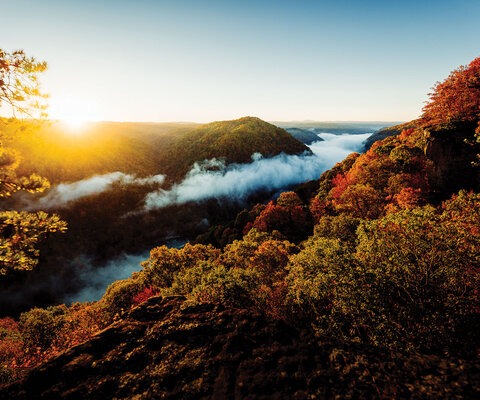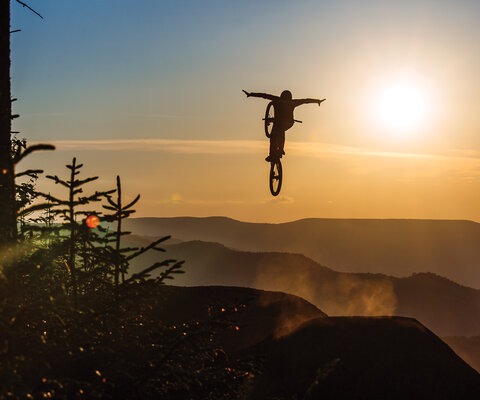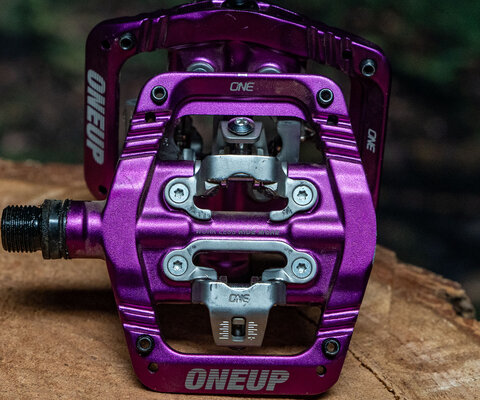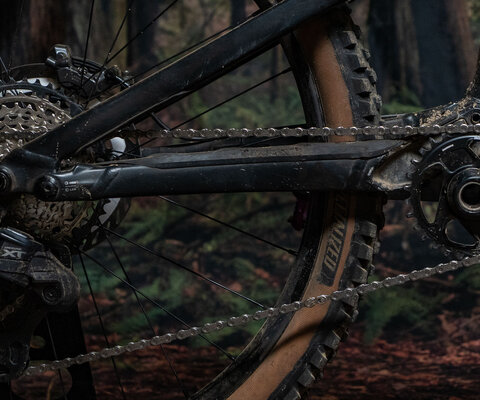
Networks of Dirt The Scattering of the Bentonville Phenomenon
Words by Kristian Jackson
In the beginning, a do-it-yourself ethic pervaded mountain biking. The first riders cobbled fat-tired rigs together and used them on existing fire roads and hiking trails for the sole purpose of enjoying the experience.
Once those initial riders started building their own trails, they did it themselves, with their own vision and tools, at their own expense, and often without permission. For decades, the phenomenon of mountain biking existed as a self-contained exercise unto itself—a recreational pursuit for the exclusive benefit of the practitioners.
By the early 2000s, most states across the U.S. had communities of riders who bought into the value of bikes and trails. Some areas known for their quality of riding became destinations known among mountain bikers across the world. Northwest Arkansas was not one of those places. While the hills of the Ozarks and the Ouachitas held networks of narrow, hand-cut singletrack, it was mostly a fly-over state for riders en route to bigger terrain.
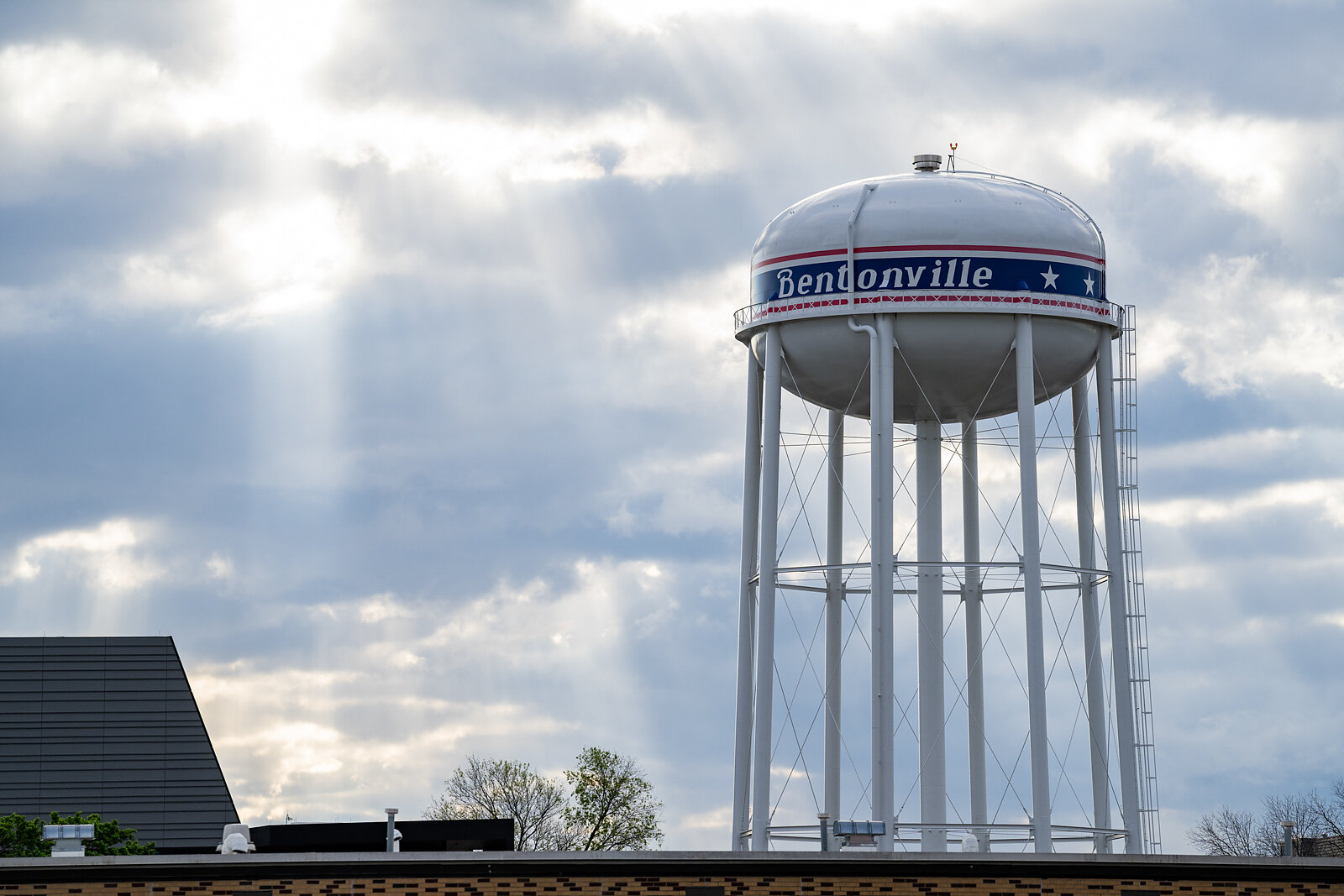
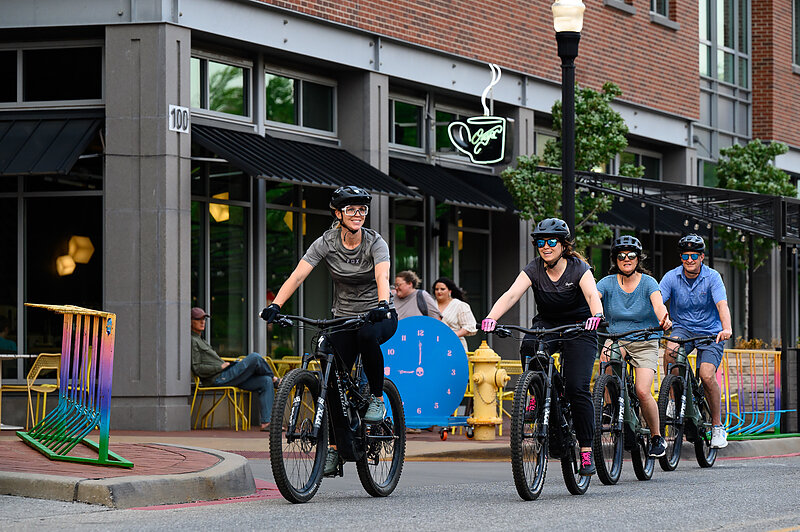
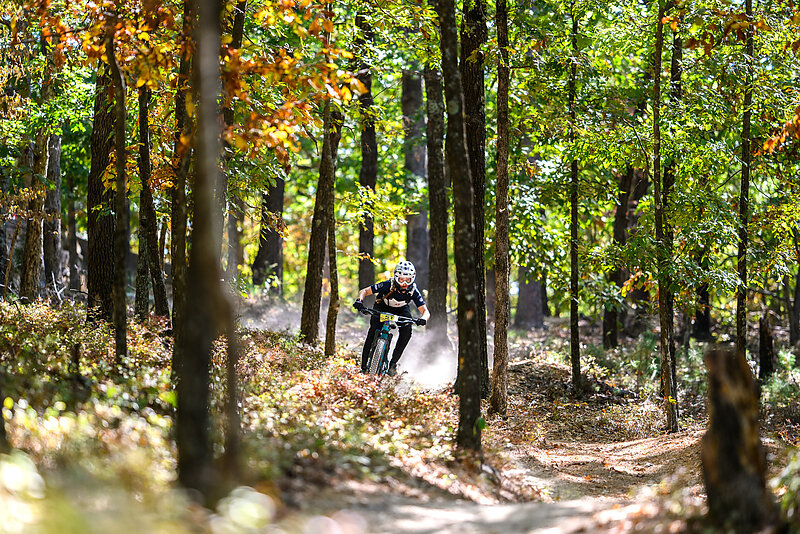
However, that started to change in 2007 when Bentonville, the corporate home of Walmart Inc., launched an ambitious plan to use mountain bike trails to improve the quality of life for locals. Tom and Steuart Walton, grandsons of Walmart founder, Sam Walton, got hooked on mountain biking and personally saw the value of trails. Through the Walton Family Foundation, they purchased land to build their first trail. This vision to increase quality of life started as five miles of trails and grew to more than 500 miles in the region. The area is now cemented firmly into the mountain biking ecosystem. And now, the “Bentonville Phenomenon” is gaining interest from small cities and towns nationwide that hope to replicate northwestern Arkansas’ use of trails to improve quality-of-life infrastructure.
“When the Walton Family Foundation deeded over the first five miles of trails to the city,” Kalene Griffith says, “it was really about talent recruitment.”
Griffith, the effervescent CEO of Visit Bentonville, has logged 20 years in town and has seen the transformation from a corporate city to an outdoor hotspot. When Griffith began her work promoting Bentonville as a tourist destination, she initially looked at the tried-and-true traditional sports model as low-hanging fruit. Though, by then, the city’s leadership, along with the Walton Family Foundation, had wholeheartedly embraced mountain biking as a vehicle to attract visitors and long-term residents alike.
With financial support from the Foundation, access to land, and a cooperative spirit, a sort of “the sky’s the limit” approach to trailbuilding began. Trailbuilders around the country pushed the boundary from trail craft toward art. Landscape architects, welders, and expert stonemasons crafted visionary trails, calling attention away from strictly riding a ribbon of dirt to a more holistic movement through an engineered experience. Trails began appearing throughout town—even side-by-side with sidewalks—connecting the city through networks of dirt. The result is a wonderland of trails that Dr. Seuss might have illustrated in one of his famous children’s books.


But instead of whimsical works on paper, these trails capture a sense of real-life play by elevating the imagination and inspiring a sense of “what cool feature is around the next turn?” Architectural features such as the rock-studded Castle serve as a gathering point, a start platform, and a reminder that the rider is in a place like no other in the world. Whatever style of trail feature a rider wants to hit—sky bridges through box cars, smooth rollers, jumps to learn on, drops to test courage, welded kickers to perfectly rounded ladder bridge step-ups, and stoned berms, it’s probably right around the corner in Bentonville.
From the beginning, there was an understanding that building trail was only one part of the success equation. Another element was teaching the community how to use the trails.
“How do we get people on bikes if we don’t create trails they can ride?” Griffith recalls. “So, it just became an organic understanding of what we did. We realized that we had to have a variety of trails, especially in a community that didn’t have a lot of avid cyclists. We have to build them up so that they’re progressive trails. They ride the beginner trails, the green trails, they go to the blue trails, and then they can go to the black trails. We knew that 80 percent of riders would not have their wheels leave the ground. Targeting those riders has been a huge part of our success.”
Back in the DIY days of mountain biking, simply becoming a mountain biker was its own challenge. Bikes were crude by today’s standards, trails lacked signs, and few supporting amenities existed. In most communities, a rider needed to load up a car and drive to a trailhead, and mountain biking existed as an exclusive activity. Bentonville’s goal was to make every driveway a trailhead. Today in town, almost every house is within a couple of miles from a trail access point.
After the city opened its first bit of singletrack, it aggressively told its story through the voices of YouTube influencers, pro riders, and festival goers, quickly becoming a media darling. The slogan “Mountain Bike Capital of the World” was pushed out to the public, earning wholesome intrigue from beginners, and skeptical attention from experienced riders across the nation.
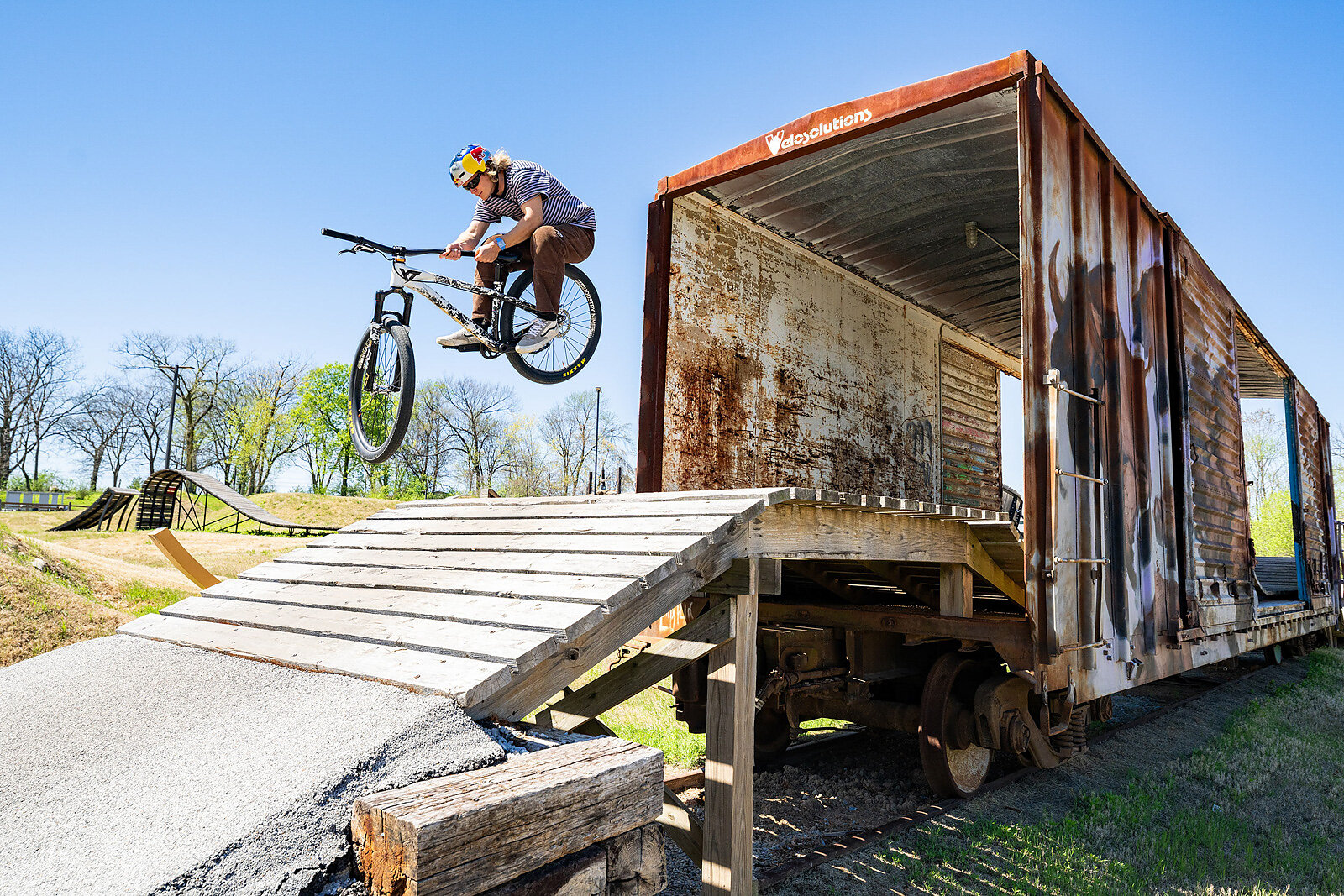
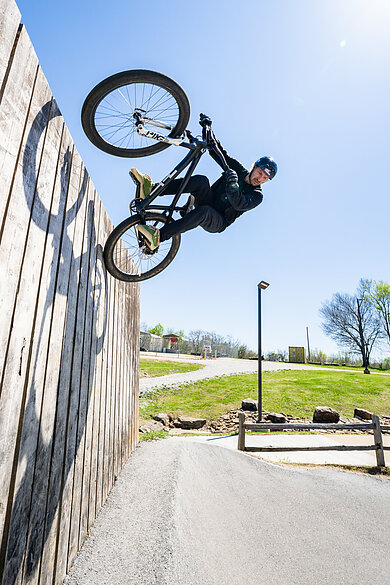
“Have you been to Bentonville yet?” became a common refrain.
The cycling industry took notice. German-based YT Industries opened its second U.S. location there. Allied Bikes, Ari, Rapha, Fox Racing, Specialized Bicycle Company, People for Bikes, and USA Cycling also opened offices.
Even the local community college has embraced the phenomenon. The Northwest Arkansas Community College started a Trail Technician program that trains students to be certified trail professionals.
“I think the community in Bentonville got behind the idea of creating the program to teach the next generation of stewards and builders,” says Lori Greminger, director of the school’s Trail Technician program. “We have all of this trail now let’s teach people how to take care of it.”
Just finishing the inaugural year of the program, Greminger helped bring together American Trails, the International Mountain Bicycling Association, and the Professional TrailBuilders Association to create a nationwide, standardized certification for trail professionals. Students include U.S. Forest Service employees looking to “upskill” themselves and other enthusiasts locally and in distant states.
“We teach them everything they need to know,” Greminger says, “then send them back out into the country so that they can take these standard practices to their communities and continue to spread good trails all over.”
This idea of sharing the goodness echoes a deeply rooted philosophy that’s prevalent in the region. The Walton Family Foundation invested in Bentonville to expand goodness through a higher quality of life. This, in turn, helped the community see the value of investing in itself. Helen Walton, wife of Walmart founder Sam Walton, once said, “It’s not what you gather, but what you scatter that tells what kind of life you have lived.”
This overarching principle helps elevate the Bentonville Phenomenon from a simple tourist equation into a philosophical practice with a far-reaching impact.
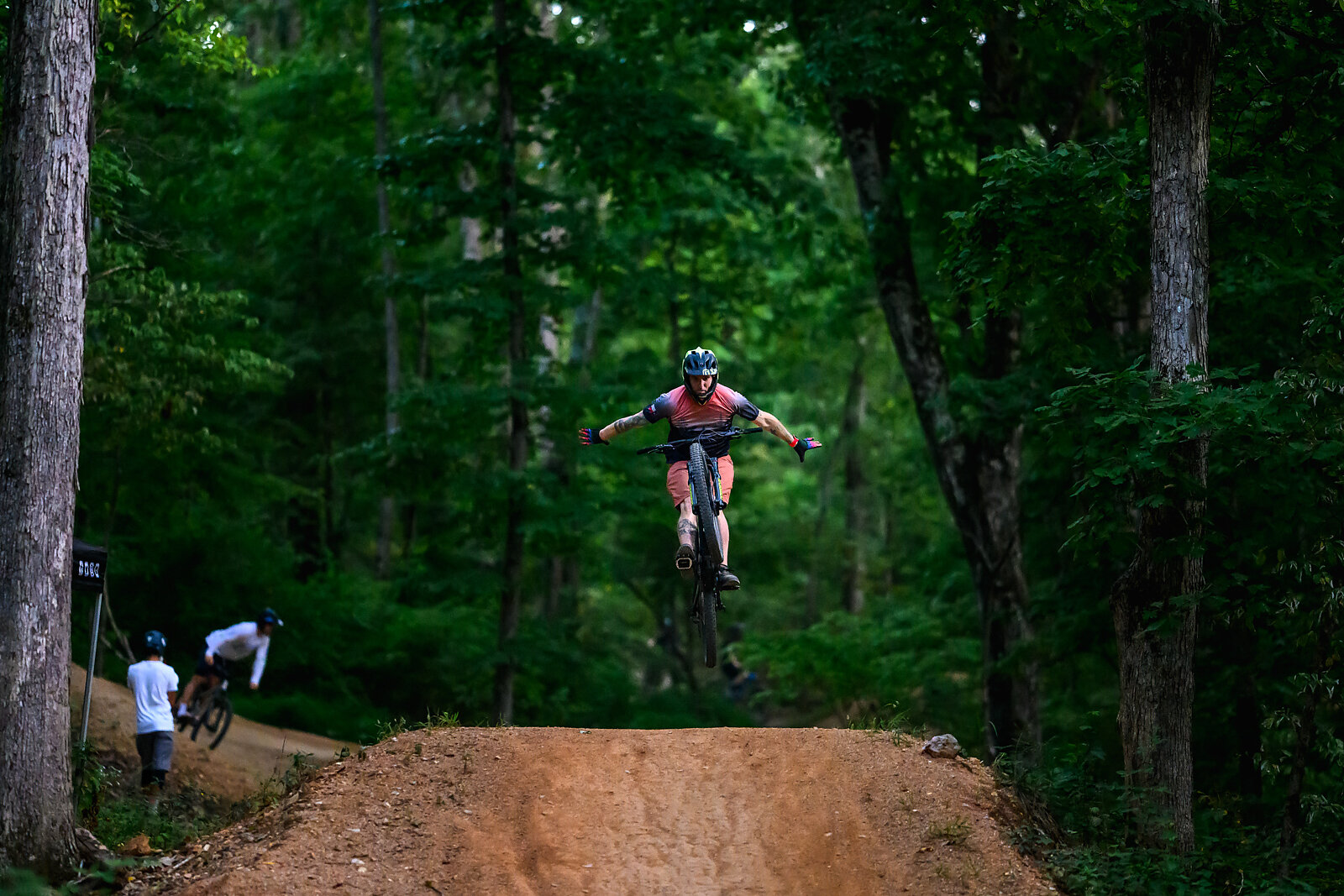
“My philosophy is that we share our knowledge to make others successful,” says Griffith. “I want more people on bikes. I want trails in every city because they help their quality of life. But I want more people to ride bikes because guess what? They’re gonna look for destinations to ride. And I want Bentonville to be at the top of the list ‘cause they’re gonna be talking about it. So that’s my goal.”
Griffith set out to teach anyone who would listen. She created what she calls “Bentonville’s Best Practices” as a field lab for outside community members to visit the city and learn the blueprint for success first-hand.
“We bring people from around the nation and the world here. We ask them about their challenges and then build a program around them,” she said. “If they need help with planning, we bring in our planning department. If a mayor comes down, we bring in our mayor.”
Last year, Griffith hosted nine communities.
One of those communities was Detroit Lakes, Minnesota. Detroit Lakes is not a mountain bike destination. Still, it does have trails and access to expansive outdoor recreation in northwestern Minnesota. Like many communities, it has resources but struggles with connecting them.
“We have Detroit Mountain and 412 lakes in our area,” says Amy Stoller Stearns, the executive director of Project 412. “The mountain is close to town. But how do you connect it? It’s not connected. You can’t get there from here.”

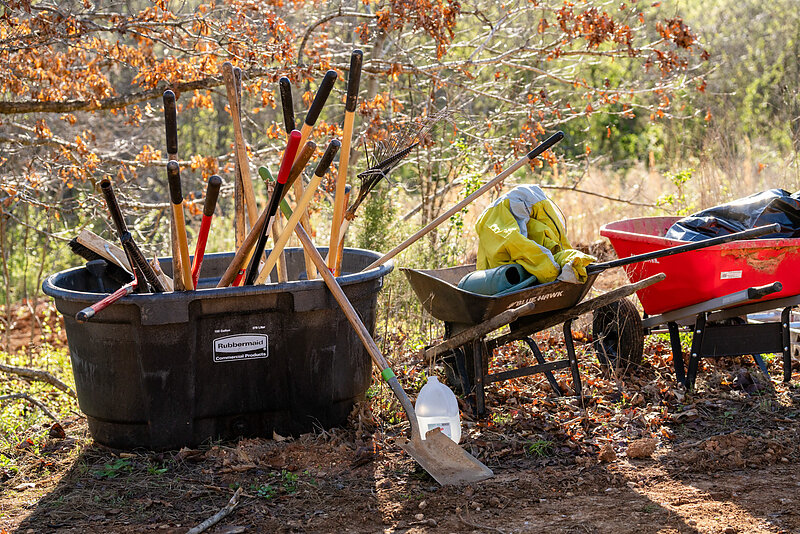
Stearns’ group, Project 412, is a nonprofit that works to make positive changes for quality of life in the Detroit Lakes area. They had a lot of questions about how to go about it.
“We have all these lakes and lots of people who come here all times a year,” Stearns says. And how do we make that connectivity? We wanted to learn and lean into the outdoors, music, public art, and trails. How do we support the entrepreneurs who dare to start a business? And then how do we invite more people in to do that?”
Through its research, the nonprofit found the story of Bentonville. In October 2022, Stearns and three others attended one of Bentonville's Best Practices Labs. Last May, the group went back as a crew of 25. Taking members of her community on the trip had two primary outcomes—it exposed them to the nuts and bolts of the Bentonville Phenomenon and helped the participants see themselves as powerful collaborators. Inspired, the group returned to Minnesota and manifested their Troll Trails.
Project 412, with private support, engaged Danish sculpture artist Thomas Dambo to create and install larger-than-life, intricate troll sculptures along the trails in the Detroit Lakes area. The Trolls were an immediate hit, drawing in more than 100,000 visitors in 2024. People from all over the world visited. Time magazine listed it as one of the top 100 places to visit in 2025.
“We’re just getting started,” Stearn says. “As an organization, we were only 2 years old when that happened. So, we’re like, ‘Whoa, what else can we do?’ It’s fun to try to figure out how we support our community and how we build things that people want and invest in them.”
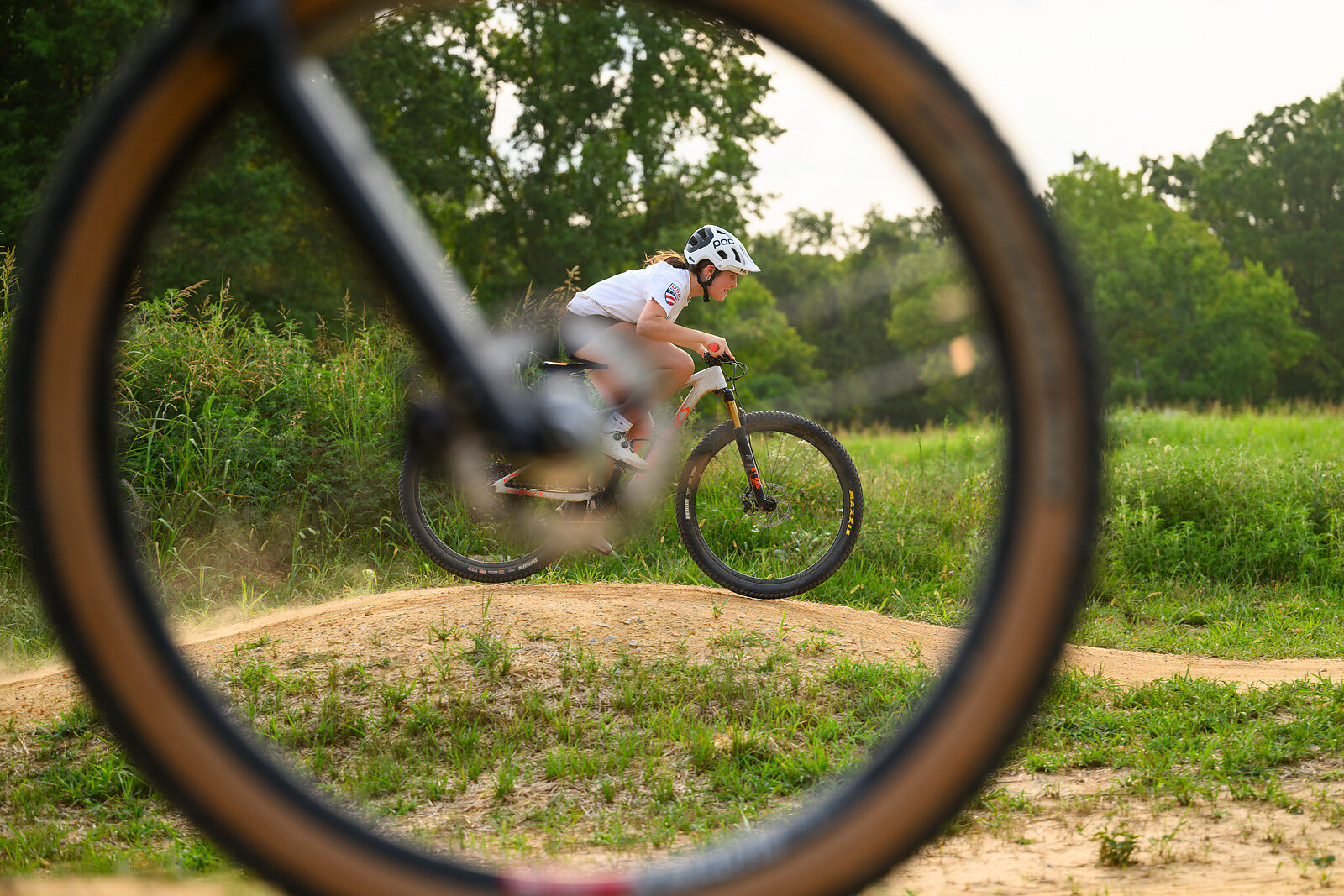
In November 2021, Brian Bozeman tagged along on a friend’s mountain bike trip to Bentonville.
“I didn’t even know where we were going,” Bozeman recalls. He threw his gear in the car and made the 10-hour drive from Cincinnati, Ohio to northwestern Arkansas.
“It was the most incredible three days of biking I had ever done,” Bozeman says. “They put trails everywhere. It went against the whole mindset of not-in-my-back-yard to please-in-my-back-yard! I wondered, why aren’t we doing this?”
Bozeman is the president of the Cincinnati Off-Road Alliance, or CORA. CORA has stewarded trails in the greater Cincinnati and northern Kentucky area for about the past 30 years in the traditional DIY fashion.
“[Trails] are something that we begged for permission and then apologized for being on them,” Bozeman says.
Bozeman met Griffith, and the wheels began turning.
“We have trails,” Bozeman says. “How do we get the people to them without loading their bikes on their car? You know, how do we connect the population to those places? How can we have the Bentonville mindset of “your driveway is your trailhead.”
“For 30 years, you could have mountain biked here,” says Bozeman. “It just became very apparent that we’ve been awful at boasting about what we’ve got and what we’ve created.”

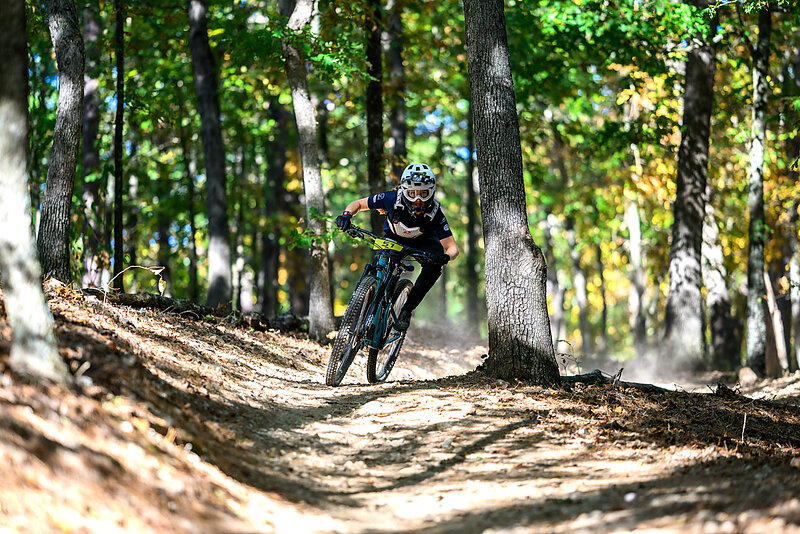
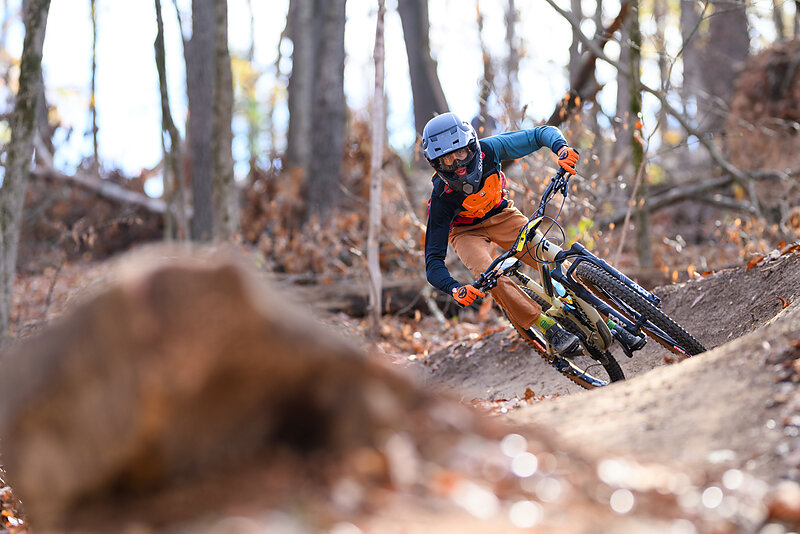
In that spirit, and inspired by Bentonville’s Best Practices, CORA began telling the story of what the area is and what it can be. The trail organization created a branding campaign called “Cincitucky Trails” and—taking a cue from Bentonville’s marketing strategy—created a bold moniker for its region: “The Land of Trails.” It also began working with the city and the visitors’ bureau to develop a 1,000-acre, destination-style park with 25 miles of trails. Now, it’s thinking even bigger and aiming to connect with the eight Fortune 500 companies in the area: “They know the Walmart story and Bentonville, right?”
For Bozeman, what guides his passion for trails is a hope that his part of the world can be the best it can be.
“I always say that I’m trying to create the place my kids never want to leave in search of some other cooler places,” he says.
The Bentonville Phenomenon is spreading across the country through networks of dirt. One of the key messages from its Best Practices is not to recreate Bentonville in other locations but, rather, to discover unique human, natural, and economic resources and then assemble them in the way that works best for each community.
It’s tempting to think of this phenomenon as being only possible with the deep pockets of a super corporation. In many communities, the most difficult aspect of creating trails is usually finding the funds. Some bike advocacy clubs work a year or more just to secure a $100,000 Recreational Trails Program grant. In many parts of the country, that amount will build a few miles of trails. Since 2007, the Walton Family Foundation has ponied up an estimated $85 million for trails in the Bentonville area. That investment in trails elevates quality of life standards and drives the gears of the tourism engine by bringing an estimated $137 million in economic impact each year.
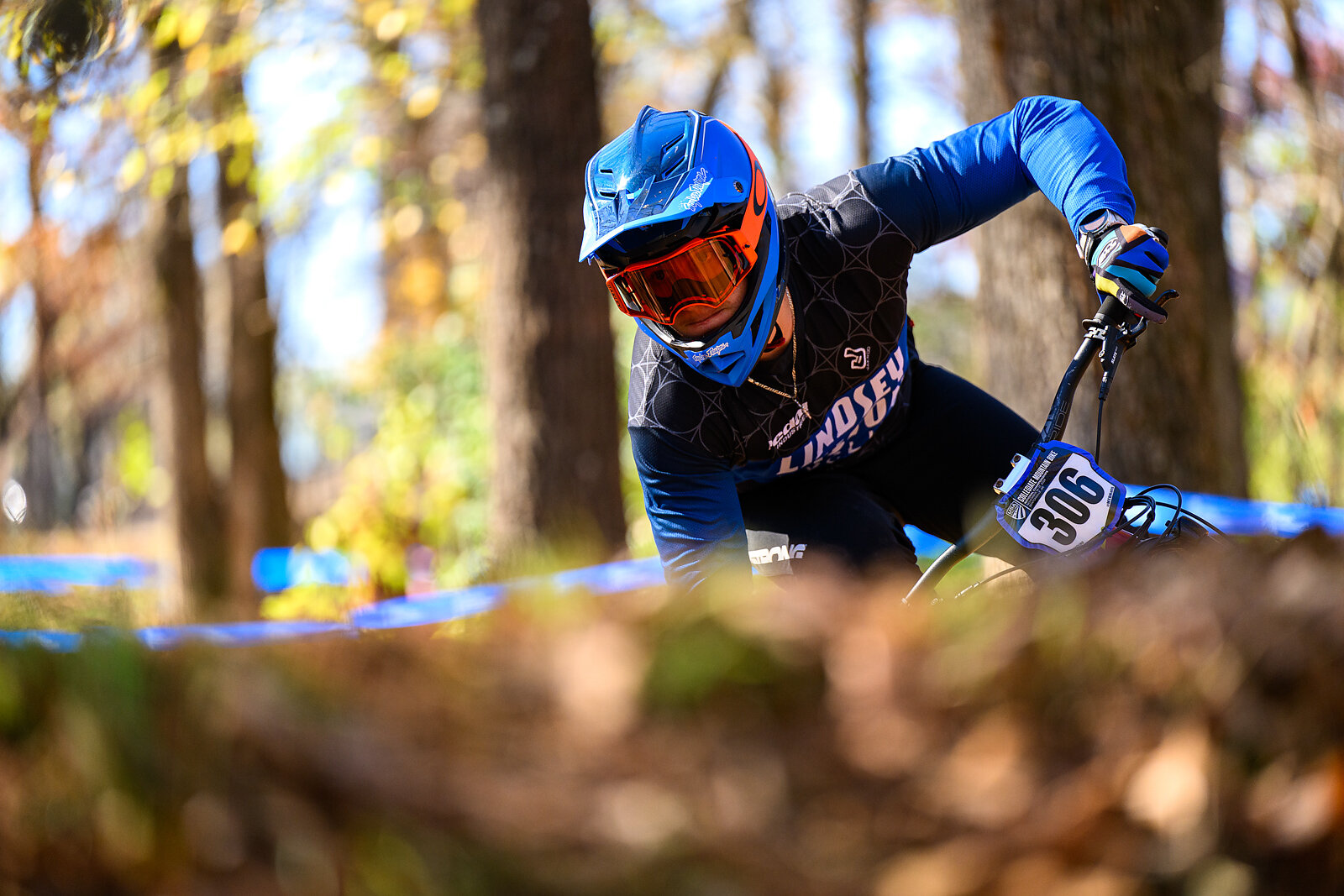
Two decades ago, simply imagining these numbers as associated with trails would have been a flight of fancy. But the numbers are real, and Bentonville’s not done. Even with large sums of corporate investment, individuals are ultimately driving the economy.
Jake Lee is one of those northwest Arkansas community members. Lee, a young entrepreneur with long hair and an affinity for the outdoors, grew up near Bentonville. After working in various parts of the local bike industry, he opened Smokehouse Cycles in nearby Fayetteville. Lee’s shop is not a shiny, ultra-modern showcase of the latest bikes. Instead, it focuses on creating a vision for how he sees mountain biking.
“As a shop, we’re about community engagement,” Lee says. “People want to know that they’re part of a community.”
Lee’s shop may not be on the must-visit list for visitors, but it showcases that what an individual brings to the table and how they do it themselves matters. Lee sees his northwest Arkansas community as still developing.
“There’s still hand-built trails and dig days going on, and trails are spreading to all four sides of the state,” he says.
Lee’s approach, like the trolls in Minnesota, the Cincitucky Trails, and other Bentonville-inspired ideas, is a scattering of the concept that individuals can do it themselves, but when working together, they can realize the extraordinary.
